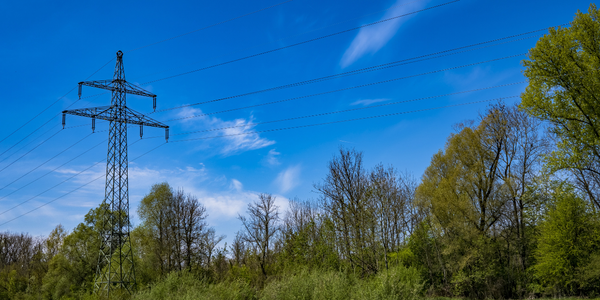公司规模
SME
地区
- Pacific
国家
- New Zealand
产品
- Domo BI & Analytics
技术栈
- Data Management
- Data Visualization
实施规模
- Enterprise-wide Deployment
影响指标
- Brand Awareness
- Customer Satisfaction
技术
- 分析与建模 - 实时分析
适用功能
- 销售与市场营销
用例
- 需求计划与预测
服务
- 数据科学服务
关于客户
新西兰橄榄球联盟 (NZRL) 是一家负责在全国范围内开展草根橄榄球运动的组织。它还管理着新西兰的专业国际球队:排名第一的 Kiwis 男子队和世界 9s 冠军 Kiwi Ferns 女子队。在经历了两年的疫情,本土没有举办任何职业橄榄球联赛之后,NZRL 获得了举办国际双打测试赛的机会,将顶级橄榄球联赛赛事带回了新西兰海岸。该组织拥有约 30 名员工和 4 名 Domo 用户。
挑战
橄榄球联赛是新西兰人生活中的重要组成部分,但疫情严重扰乱了人们的生活。虽然这项运动可以在新西兰的俱乐部级别和澳大利亚的专业级别安全地进行,但该国严格的边境管制使得国际比赛在两年多的时间里无法进行。为了恢复国际橄榄球联赛,新西兰橄榄球联盟 (NZRL) 知道它需要利用其掌握的所有数据。在因疫情中断两年后,NZRL 获得了举办国际双打测试赛的机会,将这项顶级橄榄球联赛赛事带回新西兰海岸。挑战在于增加球迷参与度并提高比赛及后续赛事的门票销量。
解决方案
新西兰橄榄球联盟与数字合作伙伴 LayerCake 合作,确定 Domo 为该组织用来执行数据战略的平台,该战略旨在提高球迷参与度并提高比赛及后续的门票销售量。Domo 被选为数据管理平台,是因为它能够在一个平台上存储、处理和可视化内容。借助 Domo,新西兰橄榄球联盟能够利用其历史门票数据、营销数据、社交营销数据和客户数据,在测试赛前夕提供信息并提升其营销影响力。他们能够更精确地确定营销对象,并且能够关联每次营销活动对门票销售的确切影响。由于他们可以更好地跟踪营销支出的影响,因此他们能够重新部署部分营销资金,因为他们知道自己已经达到了目标。
运营影响
数量效益

Case Study missing?
Start adding your own!
Register with your work email and create a new case study profile for your business.
相关案例.
Case Study
Pepsico's Transformation to Smarter Sales Forecasting with Designer Cloud
PepsiCo, a global consumer packaged goods company, faced a significant challenge in calibrating sales forecasting to supply the right product quantities to its retailers. The sales forecast incorporated a variety of data, including warehouse data, store stock data, and promotional forecast data, all of which were provided by retailers in different file formats and delivered using various methods. The primary challenge was the speed of preparing a sales forecast. With the existing Microsoft Access and Excel-based processes, the time required to prepare this data was so extensive that analysts could only leverage it once a month or not at all. This inefficiency risked under or oversupplying retailers, potentially impacting PepsiCo's business operations and customer relationships.

Case Study
Gexa Energy and AutoGrid's Innovative Demand Response Programs in ERCOT
Gexa Energy, a leading retail electricity provider in Texas, was seeking to introduce new demand response programs for its commercial and industrial customers in the Electric Reliability Council of Texas (ERCOT) market. The challenge was to provide a platform that would allow these customers to lower their energy bills by adjusting their energy consumption during peak energy demand or high wholesale electricity prices. The solution needed to be intelligent, scalable, and offer both manual and automated options for adjusting energy consumption. The demand response programs needed to include Emergency Response Service (ERS), Real-Time Price Response (RTPR), and 4 Coincident Peak (4CP).

Case Study
ZettaNet's Agile Juniper Network Meets Booming Digital Demand in Australia
ZettaNet, a privately-held company based in Perth, Australia, was facing a significant challenge due to the exponential demand for enterprise network, data center, and cloud services in the region. The company's business growth necessitated an upgrade of their core network to meet the increasing bandwidth requirements of their customers. The customers, which primarily include managed service providers, were demanding 1 Gbps connectivity between locations. These service providers then deliver network, data center, cloud, and voice services to a diverse range of customers including local businesses, schools, hospitals, residential communities, and government offices in Western and Southern Australia. The challenge for ZettaNet was to meet this high-capacity network services demand while maintaining profitability.
Case Study
Procter & Gamble Implements Terra Technology's Demand Sensing for Improved Forecast Accuracy
Procter & Gamble (P&G) faced significant challenges in accurately forecasting short-term demand for their consumer products. Their existing 24-month forecast provided a good overview for monthly or weekly production, but it was insufficient for the immediate needs of supply chain planning and manufacturing teams. These teams required a short-term forecast to plan production effectively and avoid 'fire-fighting' practices. P&G needed a solution that could provide accurate short-term demand forecasts to ensure agility and flexibility in manufacturing, especially for products with very short production and order lead times. The company explored various solutions but found that most big software companies lacked the agility to meet their specific demand sensing needs. Terra Technology's Real-Time Forecasting, later known as Demand Sensing (DS), emerged as a promising solution due to its specialized focus on consumer packaged goods (CPG) demand planning and forecasting.
Case Study
MARS Incorporated: Leading a Global Digital Transformation
MARS Incorporated, a multinational manufacturer, faced significant challenges in digitizing and standardizing processes across its mid-markets globally. The company's reliance on legacy solutions necessitated continuous, time-consuming upgrades and made data compilation and comparison across different regions and business units difficult. Excel spreadsheets were extensively used for forecasting in smaller markets, leading to disconnected processes, siloed working environments, and increased risk of data inconsistencies and inaccuracies in demand forecasting. MARS also struggled with a lack of visibility across its midmarket footprint, scattered critical data across various systems and spreadsheets, a low degree of automation, and insufficient statistical analytics for demand planning. The absence of a standard process for demand planning made it challenging to consolidate KPIs and gain a comprehensive view of demand trends and supply chain performance.

Case Study
Enterprise AI for Demand Forecasting and Production Scheduling in Global Agribusiness
A global agribusiness and food manufacturer, producing over 80 million pounds of food products per year across eight production lines, faced significant challenges in demand forecasting and production scheduling. The company's only customer, a global retailer, exhibited highly variable demand, leading to discrepancies with the manufacturer's weekly demand forecast. Traditional demand forecasting solutions, based on statistical algorithms, were unable to cope with the short lead times and daily sales orders due to the short shelf life of food products. This resulted in unfulfilled customer orders. Additional rule-based solutions procured to improve production scheduling also failed to optimize schedules and significantly improve manufacturing operations.







